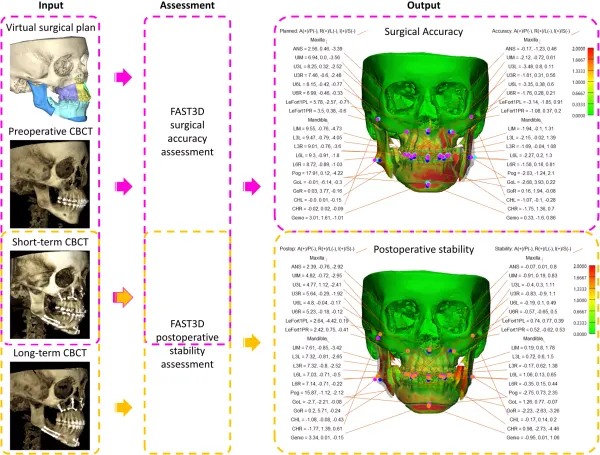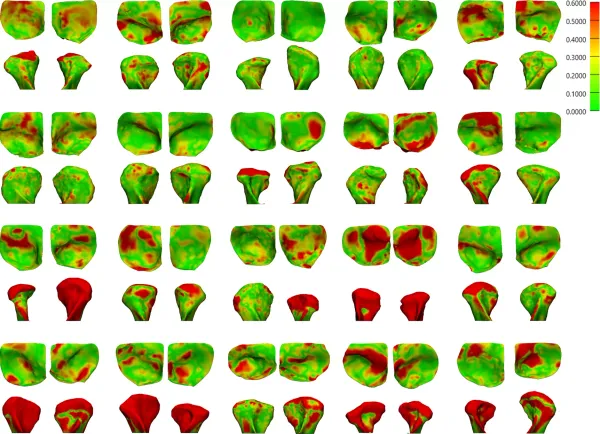Virtual Analysis of Segmental Bimaxillary Surgery
Authors: Holte MB, Diaconu A, Ingerslev J, Thorn JJ & Pinholt EM
In: 25th Congress of the European Association for Cranio Maxillo Facial Surgery
DOI Link: EACMFS2021
Abstract
Objectives: To validate and demonstrate a flexible and reliable approach for three-dimensional (3D) assessment of the accuracy and postoperative outcome of segmental bimaxillary surgery. The approach should be independent of the planning software and cephalometric landmarks. Voxel-based registration should be used for semi-automatic assessment of the 3D translational and rotational accuracy of skeletal repositioning.
Materials and Methods: A semi-automatic approach was developed and validated for virtual surgical analysis (VSA) of segmental bimaxillary surgery. Postoperative Cone beam computed tomography scans were registered to the preoperative scans by voxel-based registration using the anterior cranial base, zygomatic arches and forehead as the volume of interest unaffected by the surgery. Subsequently, all osteotomy segments were individually registered to their postoperative positions by voxel-based registration. The accuracy of the surgical outcome was calculated as 3D translational and rotational differences between the planned and postoperative outcome of the individual bone segments and an optional set of landmarks, without the need of landmark re-identification.
Results: The mean difference of the repeated intra- and inter-observer translational and rotational measurements on ten patients were less than one voxel (<0.21 and <0.30 mm) and one degree (<0.40 and <0.88˚), respectively. The intra- and inter-observer reproducibility was excellent (ICC >0.95 and >0.83). Bland-Altman plots showed high degree of agreements, low biases and no systematic errors. The rotational measurements of the chin and the anterior maxillary segment were the least consistent. The evaluated surgical outcome was within the clinical acceptable accuracy of 2 mm/˚, except discrepancies in the flaring of the maxillary segments, the pitch of the chin and the rotation of the proximal mandibular segments.
Conclusion: The validation showed that the VSA is clinically reliable and has excellent reproducibility for quantification of the postoperative outcome and surgical accuracy of 3D translational and rotational skeletal movements, even for genioplasty and segmental maxillary osteotomies.





